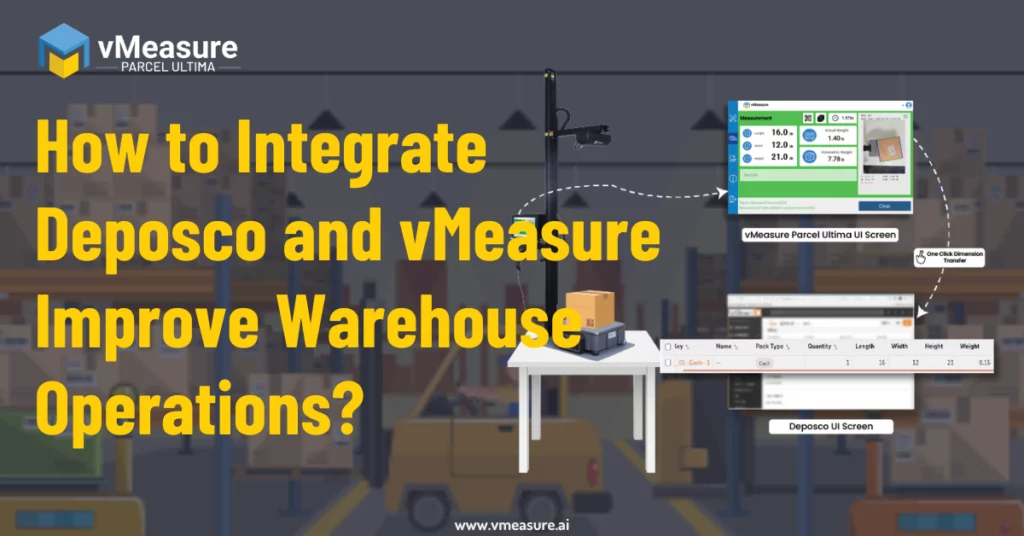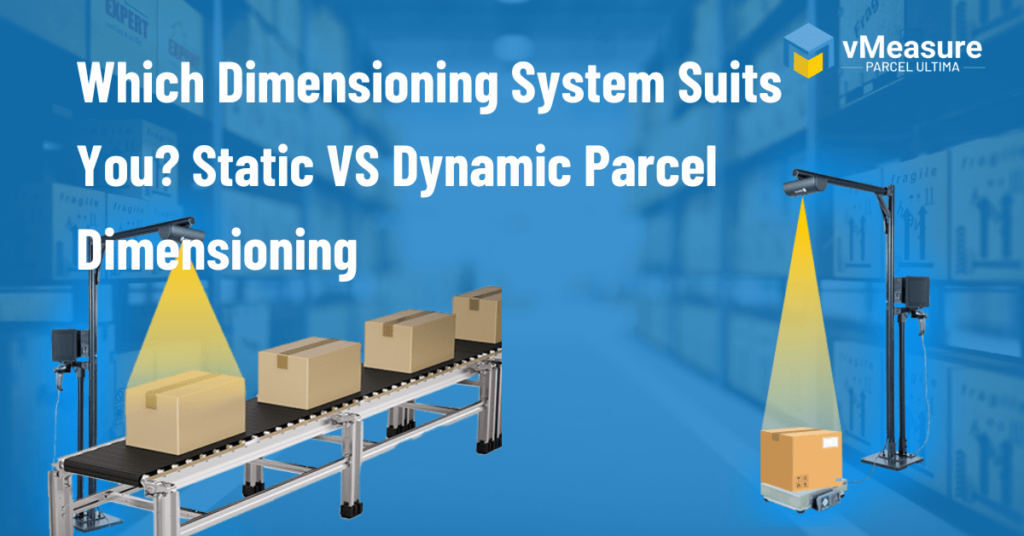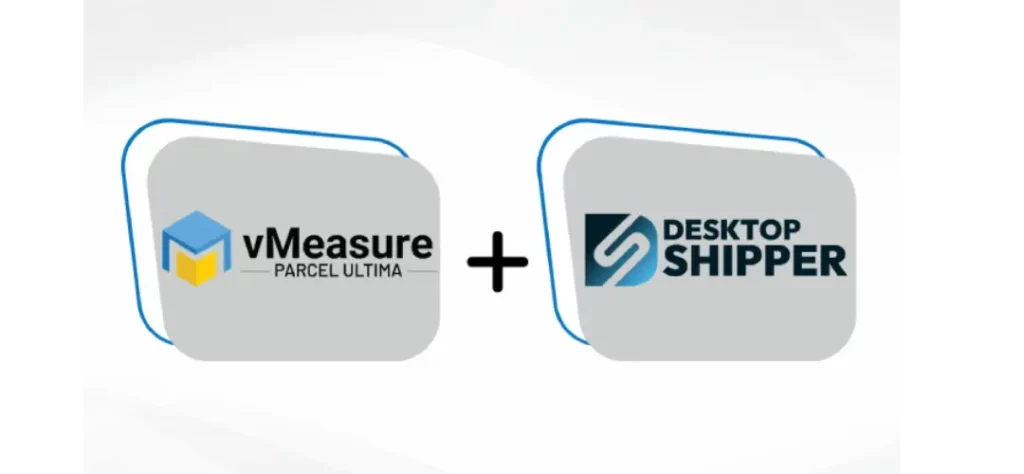Table of Contents
Introduction
Have you ever walked into a well-organized warehouse and thought, “How do they manage to make everything fit so neatly while speeding up operations?” We know you’ve thought about this question. Many warehouse operators are on a continuous quest to unlock the secret to maximize efficiency. The game-changing answer often lies in a seemingly simple yet profoundly impactful concept—Dimensioning.
In today’s fast-paced, ecommerce-driven world, the ability to quickly store, locate, and ship products is the backbone of a successful operation. That’s why optimizing warehouse space is no longer a luxury or an afterthought—it’s an absolute necessity. With rent for industrial spaces skyrocketing and consumer demand showing no signs of slowing down, every square foot counts.
In this comprehensive guide, we’ll take a journey into the world of dimensioning. We’ll explore its definition, its pivotal role in the grand scheme of warehouse management, and the nitty-gritty details of how to implement it effectively.
What is Dimensioning?
If you’re new to the term ‘dimensioning,’ it might sound like a complex, scientific procedure. But, at its core, dimensioning is a straightforward concept. It involves measuring the length, width and height of the parcels.
Picture your warehouse for a moment. It’s filled with products of all shapes and sizes, perhaps even varying weights. How you arrange these products is crucial for a smooth operational flow. This is where dimensioning comes into the picture—it provides precise package measurements that allow you to make data-driven decisions about where each package should be placed. Whether it’s determining the best shelf for a product or calculating how many items can fit in a given space, dimensioning makes it happen seamlessly.
But the role of dimensioning doesn’t stop at storage; it extends into various aspects of warehouse management, from inventory control to order picking, right down to shipping. By knowing each product’s dimensions, you can optimize your routes within the warehouse, reducing the time and labor required to fulfil orders.
The Importance of Warehouse Space Optimization
Strategic Space Utilization: Your Warehouse as a Chessboard
Imagine your warehouse as a chessboard where every square inch is a valuable piece of real estate in the logistics landscape. Just like in chess, strategic decisions about space utilization can tip the balance between operational success and logistical inefficiencies.
The role of space optimization in a warehouse is paramount, with direct impacts on overhead costs, picking efficiency, and inventory management.
Reducing Overhead Costs
In the logistics world, overhead costs like rent, utilities, and labor can quickly eat into profit margins. Every pallet position, shelving unit, or bulk storage area that remains unoptimized is essentially money left on the table. With the rising costs of commercial real estate, optimizing every cubic foot becomes even more critical.
By implementing dimensioning tools that accurately measure the volume and weight of inventory items, you can increase your storage density, thereby lowering your cost per square foot and improving your bottom line.
Speeding up the Picking Process
Time is a critical KPI in warehouse operations. The longer it takes for pickers to traverse the aisles and collect items, the higher your labor costs and the lower your throughput.
Dimensioning technology can inform warehouse layout design, ensuring that high-velocity SKUs (Stock Keeping Units) are placed in ‘golden zones’ for easy and quick access.
Through strategic slotting based on dimensional data, you can significantly reduce picker travel time, leading to higher order picking rates and lower labor costs.
Improving Inventory Management
Effective inventory management is the backbone of any well-run warehouse. Poorly managed inventory leads to issues like stockouts, overstocks, and carrying costs, all of which can be mitigated through optimized space utilization.
Dimensional data allows for better storage bin assignments, ensuring that items fit perfectly in designated slots. This streamlines the cycle counting process and makes it easier to execute a FIFO (First-In, First-Out) or LIFO (Last-In, First-Out) inventory strategy. Additionally, having accurate dimensional data helps integrate with WMS (Warehouse Management Systems) to offer real-time inventory visibility.
In a nutshell, optimizing warehouse space is not just about squeezing more products into the shelves; it’s about strategic planning that influences various facets of warehouse operations. Proper space utilization is an operational necessity that reduces overhead, enhances picking efficiency, and fortifies inventory management—core elements that define the success of any logistics operation.
How Dimensioning Helps in Space Optimization?
Dimensioning is not just a trend but a fundamental cornerstone in modern warehousing and logistics. By measuring the length, width and height of each inventory item, dimensioning provides data that serves as the building block for effective space optimization, inventory management, and enhanced picking efficiency.
Let’s explore how dimensioning contributes to these critical aspects in depth:
Space Utilization: Precision in Planning
One of the most compelling perks of dimensioning is how it contributes to maximizing the utilization of space. Traditional guesswork or eyeballing is replaced by accurate measurements, ensuring that each product is allocated the optimal amount of storage space.
With accurate dimensional data, you can make the most of your cubic storage space, from pallet racks to shelving units. This data-driven approach can lead to more accurate storage mediums, like multi-depth racks or adjustable shelving, that adapt to the dimensions of your products.
The result is a painstakingly organized warehouse where every product has a specific location, enabling you to maximize your current area without having to pay for new space.
Inventory Management: Streamlining Through Dimensional Data
Dimensioning transforms inventory management from a challenging task into a streamlined process. Knowing the precise dimensions of your products not only helps in efficient space allocation but also in simplifying storage area organization.
Accurate dimensions can be fed into your WMS (Warehouse Management System) for real-time tracking, reducing the likelihood of overstocking or understocking. Moreover, by knowing the exact size and shape of the items, dimensioning technology can assist in dynamic slotting—automatically determining the best storage location for each item based on its dimensions, weight, and pick frequency.
This makes inventory audits quicker, cycle counting more accurate, and overall inventory management more efficient.
Picking Efficiency: Optimizing Routes and Reducing Costs
One of the most labor-intensive activities in a warehouse is picking. This process efficiency can make a significant difference in both operational speed as well as in labor costs.
Dimensioning plays a vital role in route optimization for pickers. By understanding the size and location of every product in your inventory, you can strategically plan picking routes that minimize travel time and backtracking.
Some advanced dimensioning systems can even integrate with your WMS to automatically suggest the most efficient picking routes. This reduces the time pickers spend navigating the warehouse, thereby decreasing labour costs, and increasing throughput.
Therefore, dimensioning is not merely a measure of a product size; it’s a critical tool for optimizing warehouse operations across the board. From space utilization to inventory management and picking efficiency, dimensioning provides the data that forms the backbone of an efficient, cost-effective warehouse.
Technology Behind Dimensioning
One of the most notable innovations in the dimensioning landscape is vMeasure Parcel Ultima. This automated dimensioning solution can accurately dimension, weigh, scan, photograph and store the parcel/package data in mere seconds, drastically reducing the time it takes to process incoming or outgoing inventory.
The data collected by vMeasure can be directly integrated into your WMS, allowing for real-time updates that help in dynamic slotting and accurate space allocation. With such precise information at your fingertips, you can make informed decisions that optimize every inch of your warehouse space.
Dimensioning Software: Real-Time Analytics and WMS Integration
While hardware like vMeasure handles the physical measurement and weighing, the software aspect plays an equally crucial role. Specialized dimensioning software like vMeasure Forge can process the gathered data to provide actionable insights.
More importantly, this software can easily integrate with your existing WMS (Warehouse Management System) to offer real-time analytics.
This integration enables better inventory visibility, predictive analytics for space utilization, and even the optimization of picking routes. The data can also feed into other systems such as TMS (Transportation Management Systems) for freight planning and cost calculations.
Pallet dimensioners: The Next Frontier
Pallet dimensioners or pallet dimensioning system represent the next step in dimensioning technology. These advanced dimensioning systems have the capability to measure the parcel dimensions while they are in motion on a conveyor belt or sortation system. This eliminates the need to halt the workflow for measurement, thereby speeding up the entire inventory management process.
Some of these dimensional shipping systems also incorporate machine learning algorithms to continually improve accuracy and efficiency. This is particularly beneficial for e-commerce operations and high-velocity distribution centers, where speed and accuracy are of the essence.
Case Study: Managing Customer Shipping Charges Through Accurate Dimensioning with the vMeasure Dimensional Shipping System.
A fulfillment company grappled with challenges affecting its bottom line, logistics, and IT capabilities.
Business Issues
- Revenue Loss: Inaccurate volume measurement led to underutilized warehouse space and lost revenue.
- SKU Damage: Poor item slotting caused frequent damage.
- Packaging Costs: Oversized boxes inflated costs.
IT Issues
- eCommerce Gap: Lack of a system to handle online orders.
- Resource and Space Constraints: Limited IT resources and space hampered system integrations and additional installations.
With the deployment of vMeasure parcel ultima dimensional shipping system at their packing and receiving station the fulfilment company could be able to find solutions at the following areas:
Business solution
- Warehouse Space Utilization: Accurate DIMs and product attributes have improved slotting efficiency, resulting in a measurable increase in warehouse space optimization.
- Customer Experience Metrics: Fewer product damages and right-sized packaging have contributed to better customer satisfaction scores.
- Throughput Rate: Data indicates an increase in the receiving station’s throughput rate post-implementation.
- Profitability Index: A data-driven decline in shipping costs has directly impacted profitability.
Logistics Issues
- Shipping Costs: Inefficiencies like using slightly oversized boxes increased shipping fees.
- Picking Delays: Poor slotting reduced picking efficiency and caused truck-loading delays.
Operational Solutions
- Pick and Pack Efficiency: A 30% reduction in pick and pack time post-implementation.
- SKU Handling Accuracy: SKU attributes visibility has led to a quantifiable reduction in handling errors.
- Integration Efficiency: Time taken to push accurate dimensions to the shipping software has reduced.
- Dimensioning Efficiency: Reduced time and efforts in parcel dimensioning.
Administrative Solutions
- Carrier Chargebacks: A measurable reduction in the time and resources spent on carrier chargebacks.
- Warehouse Space Planning: Data on item volumes have improved warehouse space planning and utilization.
- SKU Safety: Reduction in the rate of SKU damage during the put-away process.
- Data Reliability: Increased accuracy in records and data.
The Return on Investment (ROI) of Dimensioning
Much like investing in a gold mine, investing in dimensional shipping system offers a treasure trove of benefits, with returns that far outweigh the costs. The emphasis is not just on saving space but also on elevating operational efficiencies, streamlining workflows, and, most notably, achieving a quick ROI.
Let’s break down how the advantages of dimensioning translate into substantial financial gains. Benefits include:
Cost-Savings: More than Just Saving Space
At the surface level, dimensioning helps you make the most of your warehouse real estate, but the associated cost-savings go far beyond that.
Wasted space in a warehouse doesn’t just mean you are not storing products effectively; it means you are losing money on heating, cooling, and lighting that unused area. Additionally, inefficient space utilization can lead to the need for warehouse expansion or external storage solutions, both of which are cost intensive.
By optimizing every square inch of your warehouse, dimensioning helps you eliminate these additional costs, translating into significant savings over the long term.
Operational Efficiency: Agility in Workflow
In today’s fast-paced logistics environment, efficiency is king. The power of dimensioning to streamline operations cannot be overstated. From quicker, more accurate picking to enhanced inventory management and optimized shipping, dimensioning makes your workflow agile.
This increase in efficiency not only improves your operational throughput but also elevates customer satisfaction due to quicker order fulfilment and fewer errors.
Higher efficiency usually correlates with higher profitability, making dimensioning an invaluable asset in your logistical operations.
Quick ROI: Fast Recovery of Implementation Costs
One of the most compelling arguments for investing in dimensioning technology is the speed at which you can recover the initial costs. Given the substantial cost-savings and operational efficiencies, many businesses find that the ROI period is remarkably short.
In some cases, the implementation costs are recovered in less than a year, especially when considering the reduction in manual labour, errors, and the need for additional storage space.
Quick ROI not only justifies the initial investment but also frees up capital for further innovations and improvements in your warehouse.
Key Considerations for Implementing Dimensioning systems
Implementing dimensioning systems like vMeasure Parcel Ultima dimensional shipping system can transform your fulfillment process, but before you jump on the dimensioning bandwagon, it’s essential to evaluate some critical aspects to ensure a successful transition.
Here are some of the key considerations:
Budget: Understand Your Financial Constraints
-
Cost of Implementation
The initial cost of acquiring dimensioning systems and technology could be significant. Ensure that you have budgeted not just for the hardware and software but also for the setup, integration, and any licensing fees.- Metric to Consider: Total Cost of Ownership (TCO) and Return on Investment (ROI)
-
Ongoing Maintenance
dimensional shipping system may require periodic maintenance, which could also impact the budget.- Metric to Consider: Yearly maintenance cost as a percentage of initial investment.
Integration: Ensure Compatibility with Existing Systems
-
Software Compatibility
Your new dimensioning systems should be compatible with your existing Warehouse Management System (WMS), shipping software, and any other technology you are using in the supply chain process.- Metric to Consider: Time and resources required for integration.
-
Data Consistency
Make sure that the dimensional shipping systems can not only capture data but also harmonize it with your existing systems for a seamless flow of information.- Metric to Consider: Data consistency and integrity rates post-integration.
Training: Equip Your Staff
-
User Training
Any new technology is as good as the people using it. Allocate time and resources for comprehensive staff training.- Metric to Consider: Time required to reach proficiency, measured through competency tests or performance metrics.
-
Ongoing Support
Ensure that the vendor provides ongoing support and training materials like tutorials, user manuals, and customer support for any troubleshooting needs.- Metric to Consider: Response time for support queries and the availability of training resources.
Conclusion
Dimensioning is more than just measuring; it’s about optimizing and taking your warehouse efficiency to the next level. In the age where every square foot and minute counts, implementing dimensioning systems and practices can offer a competitive edge that is hard to ignore.
Set to transform your warehouse with dimensioning magic? Let’s talk tailor-made dimensional shipping systems today.
Ready to revolutionize your shipping process? Schedule a live call with our team to discover how our innovative solutions can drive your business forward.




